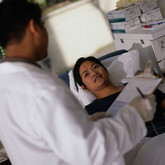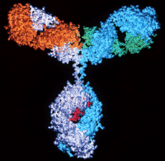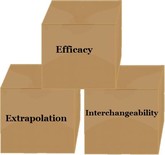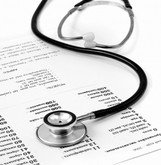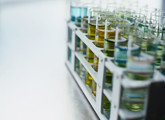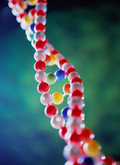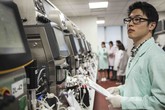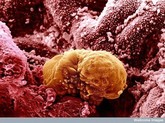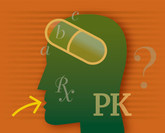Biosimilars/Research
Sharing biosimilars substitution information with patients critical
On 12 October 2013, California Governor Jerry Brown vetoed legislation known as SB 598. Some believed this bill would have impeded access to biosimilars, but others believe it would have supported and strengthened patient-provider communication [1].
More immunogenicity data needed for biosimilar mAbs
Eight therapeutic monoclonal antibodies (mAbs) will lose EU and US patent protection before 2020, making way for a new class of biosimilar. The promise of biosimilar mAbs is enticing, but these are more complex molecules than current biosimilars and it is unclear how their similarity with originator mAbs will be tested.
The future of biosimilar mAbs in Europe
Biosimilars – products that are similar to originator biological medicinal products – have had a positive impact on healthcare systems. But it takes up to four years following market approval before biosimilars are accepted by the clinical community and by the people holding the purse strings. Now, a new class of biosimilar –monoclonal antibodies (mAbs) – is set to challenge the system further, writes Professor Andrea Laslop of the Austrian Agency for Health and Food Safety [1].
Immunogenicity of biologicals: the role of post-translational modifications
Although produced under strict quality control(s) nascent endogenous proteins and glycoproteins (P/GP) are structurally heterogeneous and subject to further structural changes throughout their in vivo life cycle. A nascent polypeptide chain may be subject to co-translational modifications (CTMs) as it is extruded from the ribosome tunnel, e.g. the addition of oligosaccharide; edited for correct folding and initial oligosaccharide processing within the endoplasmic reticulum and subject to post-translational modifications (PTMs) during passage through the Golgi apparatus. The functional activity of a P/GP may be dependent on further chemical modifications (CMs), e.g. deamidation, enzymatic cleavage. These heterogeneities are compounded when determining the structure of a purified P/GP because further CMs may be introduced during its isolation, purification and characterization [1].
Extrapolation of indications in biosimilars: infliximab
Physicians may not be well informed about the scientific concept underlying the principle of extrapolating* indications for biosimilars. This in turn may lead them to distrust biosimilars, leading to a lower than expected uptake in Europe, especially in extrapolated indications. Members of the European Medicines Agency’s (EMA) Working Party on Similar Biological (Biosimilar) Medicinal Products (BMWP) address these concerns using extrapolation of indications in biosimilar infliximab as an example [1].
Non-clinical study shows similarity of biosimilar etanercept
The results of a non-clinical study of a candidate biosimilar etanercept (GP2015) has shown the similarity, with respect to in vitro and in vivo characteristics, of the biosimilar (GP2015) and its reference product, Amgen’s blockbuster autoimmune disease treatment Enbrel (etanercept).
Assessing structural comparability using NMR
Several biologicals will lose patent protection within the next few years, opening up the market for biosimilars [1]. According to US Food and Drug Administration (FDA) guidelines, biosimilar applicants should demonstrate biosimilarity using a stepwise approach, which includes structural and functional characterization, animal toxicity, pharmacokinetics and pharmacodynamics, immunogenicity, and clinical safety and effectiveness [2]. FDA expects extensive characterization of the proposed biosimilar and the reference product using state-of-the-art analytical technology including analysis of the protein (primary, secondary, tertiary, quaternary structure as well as post-translational modifications).
Biosimilars and treatment of IBD in Italy
In February 2015, the patent for infliximab expired in Italy. Now, biosimilar CT-P13 products (Remsima and Inflectra), the first monoclonal antibody biosimilar of infliximab, are on the Italian market. In their recent paper, Annese et al. [1], assessed gastroenterologist’s view of the use of CT-P13 for the treatment of inflammatory bowel disease (IBD) in Italy.
What makes physicians consider patients suitable for biosimilar infliximab
Prescribing physicians play an important role in the adoption of biosimilars in rheumatic diseases. Assessing physician perception of patients they consider as suitable for biosimilars may provide insights into eventual biosimilar adoption in clinical practice settings as well as any physician educational needs.
What internists should know about biologicals and biosimilars
Authors from the IRCCS Istituto di Ricerche Farmacologiche Mario Negri, Milan, Italy discuss some of the most frequent concerns raised by internists about biosimilars [1].
Positive phase III results for adalimumab and trastuzumab biosimilars
Phase III studies of an adalimumab biosimilar from Momenta Pharmaceuticals (Momenta) and a trastuzumab biosimilar from Pfizer have, according to the companies, shown that the biosimilars are ‘equivalent’ compared to their respective originator biologicals.
Assessing analytical comparability for G-CSF biosimilars
According to the US Food and Drug Administration (FDA), a biosimilar is a biological product shown to be ‘highly similar to an FDA-approved biological product’, and which ‘has no clinically meaningful differences in terms of safety and effectiveness’. Only minor differences in clinically inactive components are allowable in biosimilars. Biosimilars of approved biologicals at the end of their patent life are expected to cost less but be as safe and effective for licensed clinical uses. To date, FDA has approved four biosimilars [1], while the European Union has approved more than 20 biosimilars [2].
Effectiveness of ESAs in treating anaemia in kidney disease and cancer patients
Erythropoiesis-stimulating agents (ESAs) are biological analogues of human erythropoietin used for the treatment of anaemia associated with chronic kidney disease (CKD) and chemotherapy treatment in cancer patients [1]. ESA biosimilars have been available on the Italian market since 2007. However, only limited post-marketing data exist on the comparative effectiveness of biosimilar and originator ESAs in routine care.
Clinical and regulatory issues for biosimilars
As the first biosimilars are being approved in the US, there are a number of clinical and regulatory issues that must be considered for the safe and appropriate utilization of these products within the health system [1]. Biosimilars provide the opportunity to lower cost and improve access to important biological treatments. However, their success will depend largely on their acceptance by clinicians, payers and patients.
A multidisciplinary perspective on biosimilars
A biosimilar is an officially regulated and approved copy of an originator biological therapy. Authors Khraishi et al. aimed to provide a comprehensive review of the biosimilar development process and multidisciplinary guidance on their potential therapeutic utility in clinical practice [1]. They discussed clinical developments in the introduction of biosimilars across the expert disciplines of gastroenterology, nephrology, oncology and rheumatology, and from a payer perspective. They highlight a common need for ongoing pharmacovigilance, robust head-to-head clinical studies, and real-world data to establish the long-term risk-benefit profile of biosimilars.
How the biosimilars market is changing
Access to high quality medicine at affordable prices without jeopardizing patients’ health is one of the key challenges in developed countries where rising life expectancy and growing average age puts pressure on national healthcare systems. Biosimilars represent a class of medicinal products that seem to be attractive in tackling this challenge. However, market acceptance of biosimilars in general is still low.
Pharmacokinetic behaviour of a trastuzumab biocomparables
Biosimilars represent a viable alternative for the treatment of chronic and degenerative diseases of many patients worldwide who cannot afford the costs of biotherapies based on originator products. Trastuzumab is a humanized monoclonal antibody, which is used for the treatment of HER2-positive breast cancer. In the review paper of Miranda-Hernández et al. [1], the authors described the development of a trastuzumab biocomparable by Mexico-based Probiomed. This biocomparable, according to the authors, was developed in compliance with international guidelines and the characterization of Critical Quality Attributes (CQAs), as well as the pharmacokinetic parameters evaluated in healthy volunteers, demonstrated comparability with the reference product.
Benefits and concerns related to biosimilars
As patents of the first introduced biological therapeutics in oncology have begun to expire, competing pharmaceutical companies are allowed to produce and market the same protein as the originator agent. This follows the pattern of the development of generics. However, biosimilars are fundamentally different from generics. Particularly in the field of oncology, the introduction of monoclonal antibodies has resulted in spectacular therapeutic advances by increasing the cure rate of early cancers and prolonging survival. Similar advances have occurred in rheumatology, haematology, neurology and other fields. Most therapeutic biologicals are monoclonal antibodies with molecular weights of around 140,000 Daltons [1]. Other peptides include hormones, growth factors and vaccines [2]. Most of those products are expensive and their broad application drains the financial resources of healthcare systems. Therefore, the development of biosimilars is expected to be mutually beneficial for both the pharmaceutical industry and society: pharmaceutical companies may enter a lucrative business, whereas payers reasonably expect lower prices for these costly but essential drugs.
Pharmacovigilance compliance for biocomparables in Mexico
Filgrastim is widely used in Mexico, as in other countries. Its patent has expired and hence several non-originator biologicals have appeared. Following WHO guidelines, the General Health Law of Mexico was modified in 2009 to provide a solid regulatory environment for biosimilars (or biocomparables as they are called in Mexico) [1].
Naming affects pharmacists’ perceptions and dispensing of biosimilars
A study of pharmacists, carried out jointly by the Academy of Managed Care Pharmacy (AMCP) and the Hematology/Oncology Pharmacy Association (HOPA), found that pharmacists had a preference for distinguishable names. However, the study also found that using the same names for interchangeable biologicals would make pharmacists more likely to dispense biosimilars [1].
